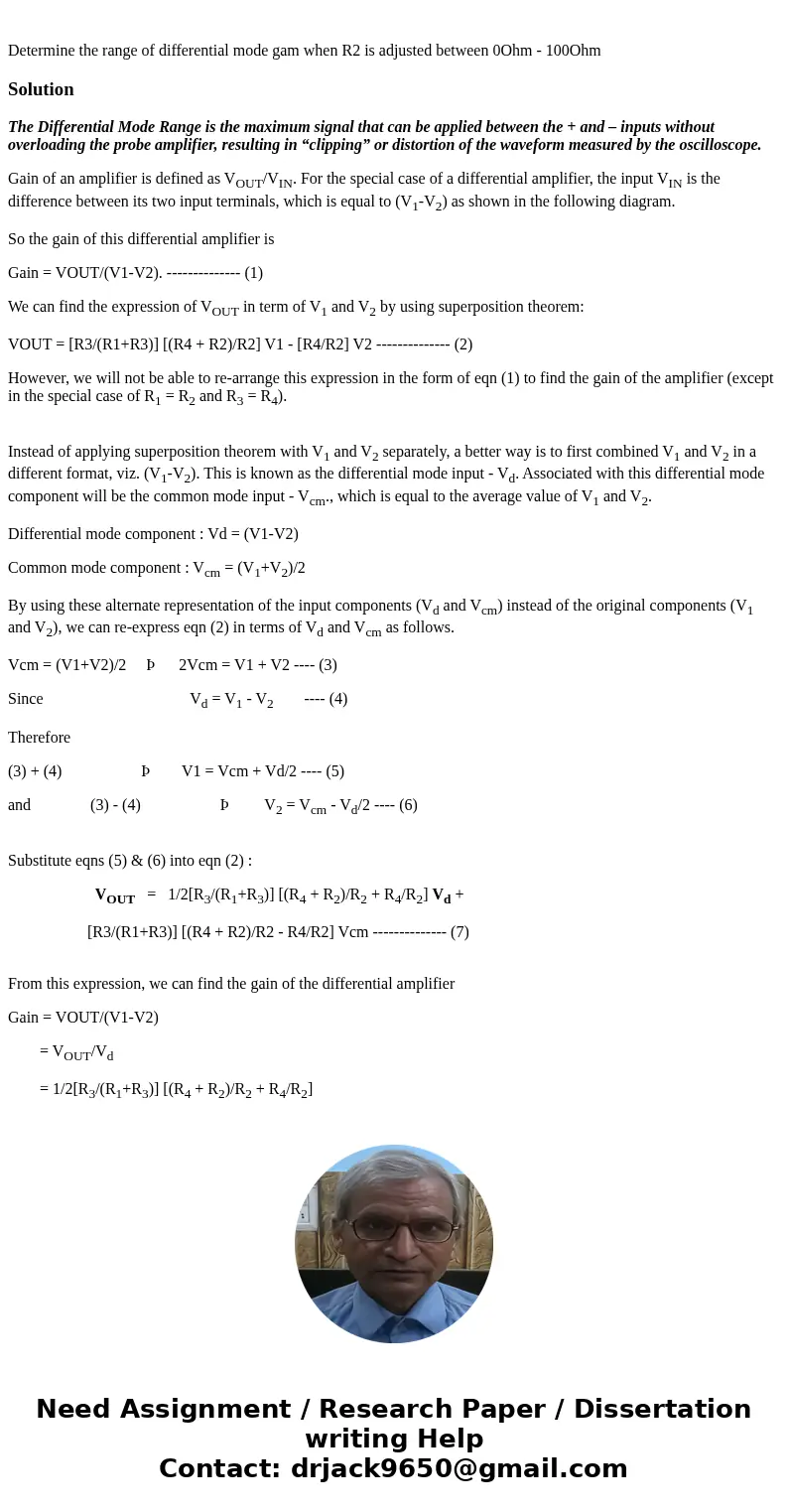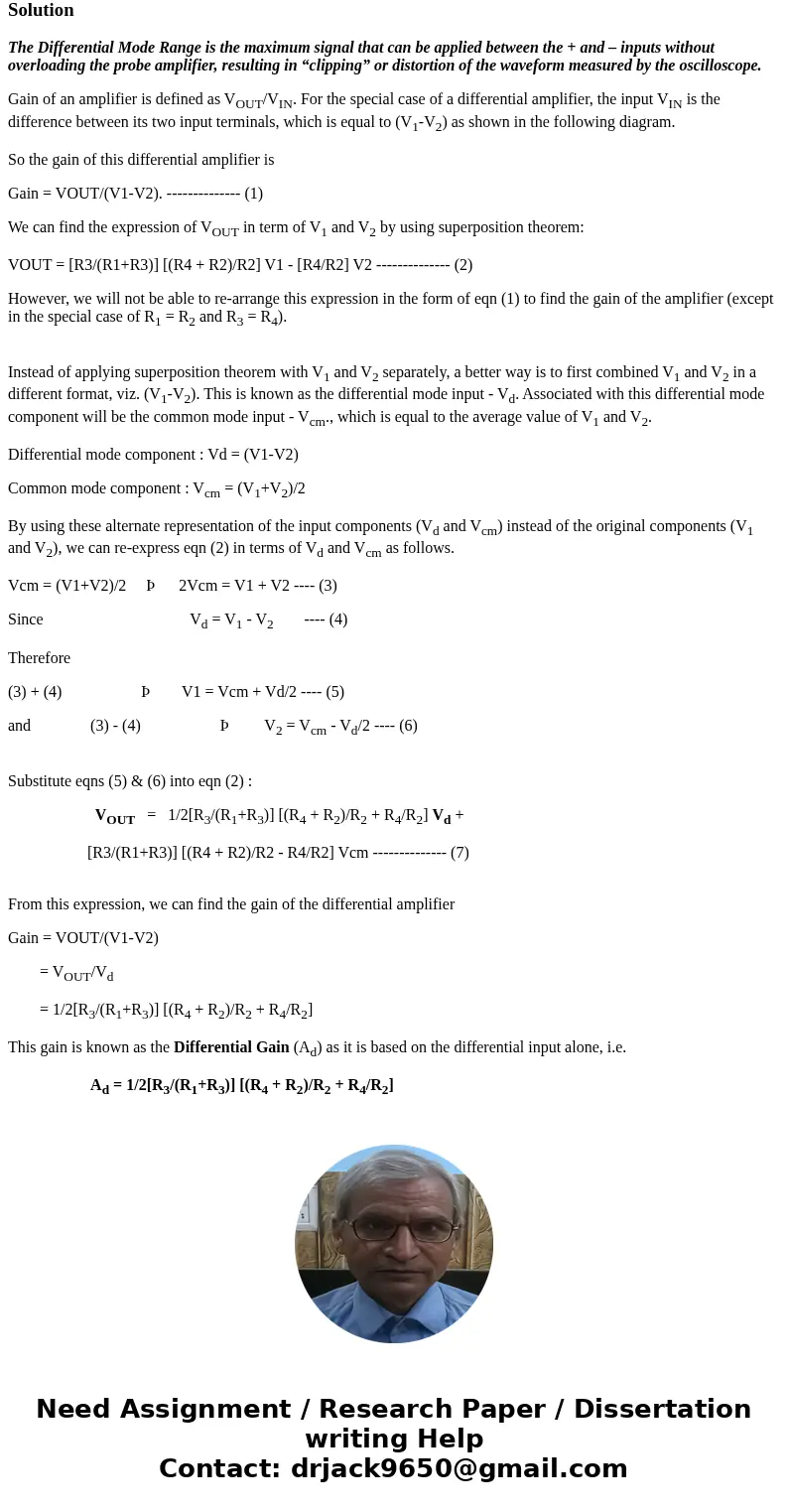Determine the range of differential mode gam when R2 is adju
Solution
The Differential Mode Range is the maximum signal that can be applied between the + and – inputs without overloading the probe amplifier, resulting in “clipping” or distortion of the waveform measured by the oscilloscope.
Gain of an amplifier is defined as VOUT/VIN. For the special case of a differential amplifier, the input VIN is the difference between its two input terminals, which is equal to (V1-V2) as shown in the following diagram.
So the gain of this differential amplifier is
Gain = VOUT/(V1-V2). -------------- (1)
We can find the expression of VOUT in term of V1 and V2 by using superposition theorem:
VOUT = [R3/(R1+R3)] [(R4 + R2)/R2] V1 - [R4/R2] V2 -------------- (2)
However, we will not be able to re-arrange this expression in the form of eqn (1) to find the gain of the amplifier (except in the special case of R1 = R2 and R3 = R4).
Instead of applying superposition theorem with V1 and V2 separately, a better way is to first combined V1 and V2 in a different format, viz. (V1-V2). This is known as the differential mode input - Vd. Associated with this differential mode component will be the common mode input - Vcm., which is equal to the average value of V1 and V2.
Differential mode component : Vd = (V1-V2)
Common mode component : Vcm = (V1+V2)/2
By using these alternate representation of the input components (Vd and Vcm) instead of the original components (V1 and V2), we can re-express eqn (2) in terms of Vd and Vcm as follows.
Vcm = (V1+V2)/2 Þ 2Vcm = V1 + V2 ---- (3)
Since Vd = V1 - V2 ---- (4)
Therefore
(3) + (4) Þ V1 = Vcm + Vd/2 ---- (5)
and (3) - (4) Þ V2 = Vcm - Vd/2 ---- (6)
Substitute eqns (5) & (6) into eqn (2) :
VOUT = 1/2[R3/(R1+R3)] [(R4 + R2)/R2 + R4/R2] Vd +
[R3/(R1+R3)] [(R4 + R2)/R2 - R4/R2] Vcm -------------- (7)
From this expression, we can find the gain of the differential amplifier
Gain = VOUT/(V1-V2)
= VOUT/Vd
= 1/2[R3/(R1+R3)] [(R4 + R2)/R2 + R4/R2]
This gain is known as the Differential Gain (Ad) as it is based on the differential input alone, i.e.
Ad = 1/2[R3/(R1+R3)] [(R4 + R2)/R2 + R4/R2]


 Homework Sourse
Homework Sourse